Welcome back to Know a Knot! The last joining knot we covered was the double sheet bend. Today we’re going to cover another joining knot: the double fisherman’s bend.
There is a critical difference in these knots, and a reason you need to know both. While the double sheet bend is for joining two ropes of different diameter, the double fisherman’s is for joining ropes of the same diameter. It is a very strong knot. As a bonus, if you know this knot, you already know another knot that we’ll get into another day. Let’s get into the double-fisherman’s bend.
Double Fisherman’s Bend: Step 1
Begin with the working ends of two different ropes. I apologize that I only had one color of rope available for these photos.
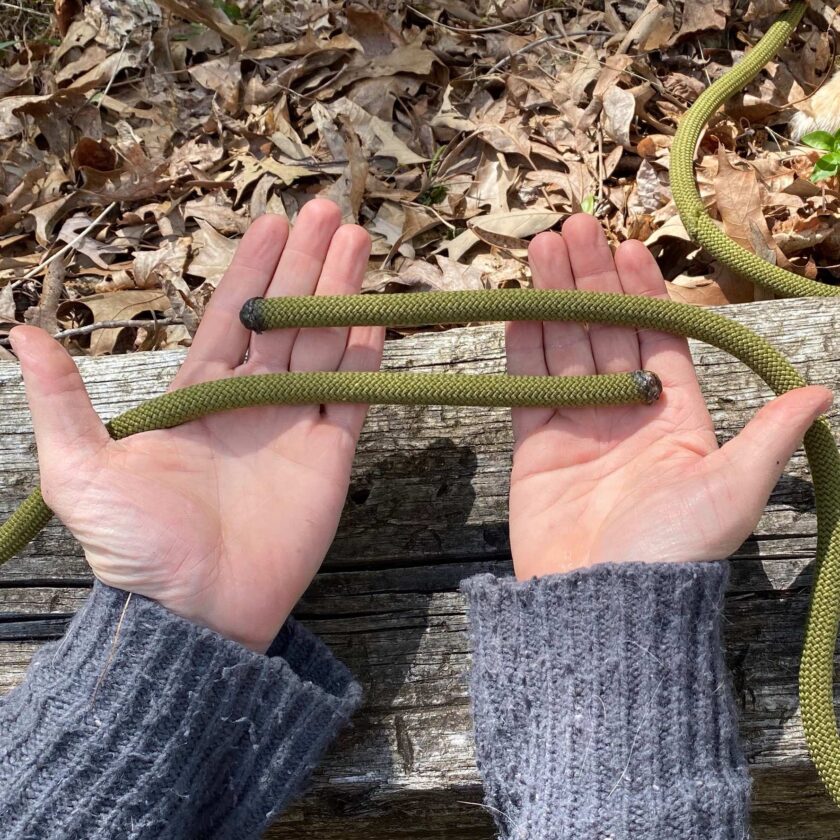
Double Fisherman’s Bend: Step 2
The double fisherman’s bend requires tying the same knot twice. With one rope, wrap a loop around the other. Words will doubtlessly fail me in describing this knot, so when in doubt, follow the photos.
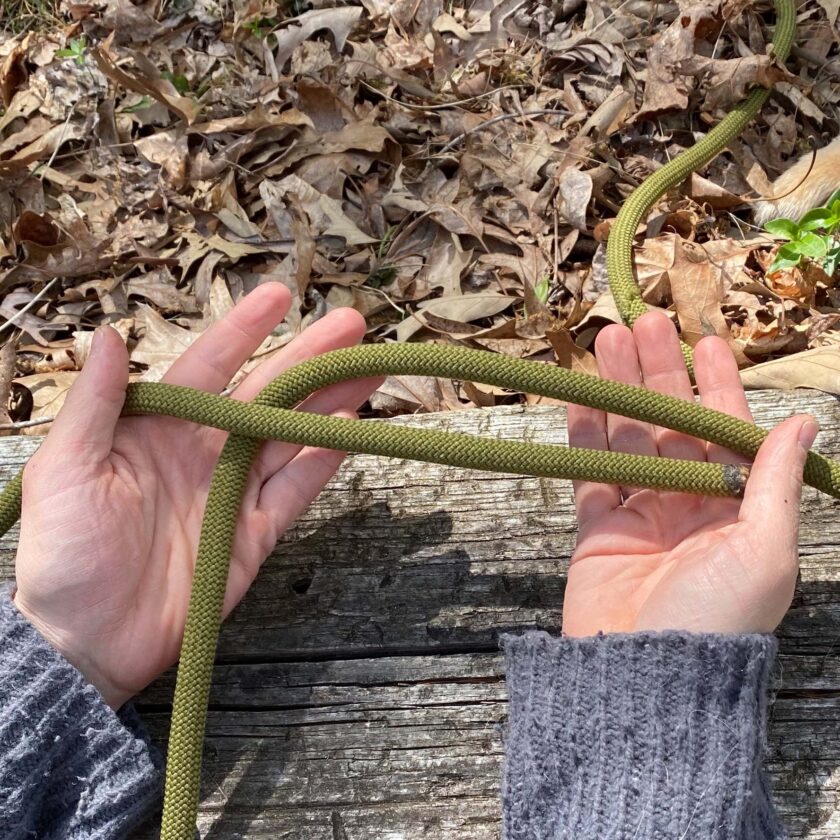
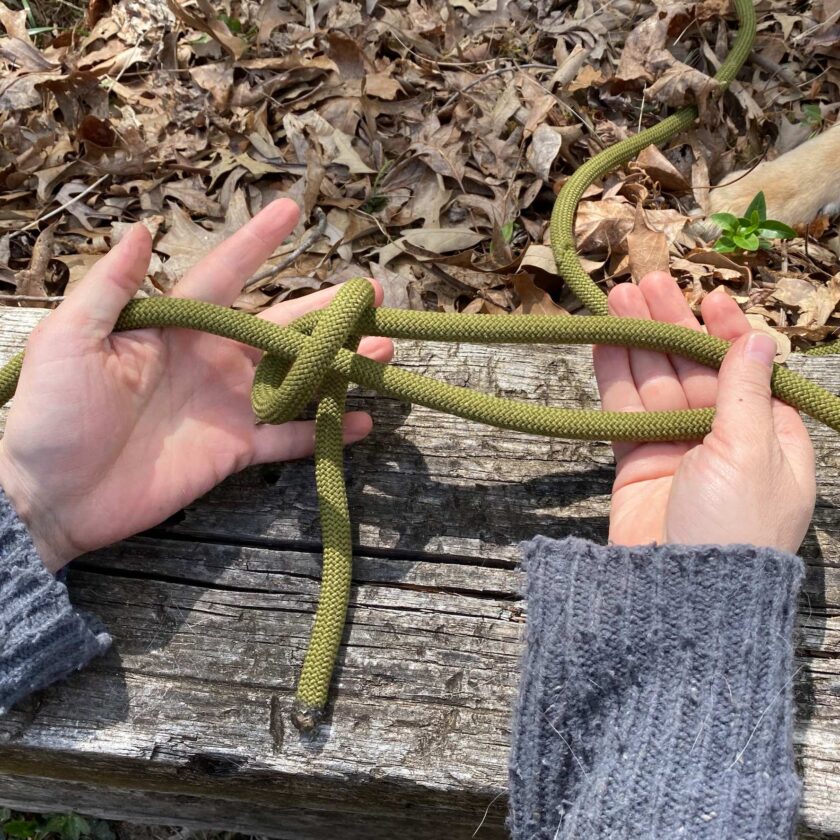
Double Fisherman’s Bend: Step 3
Double this loop and pass the working end back through both loops.
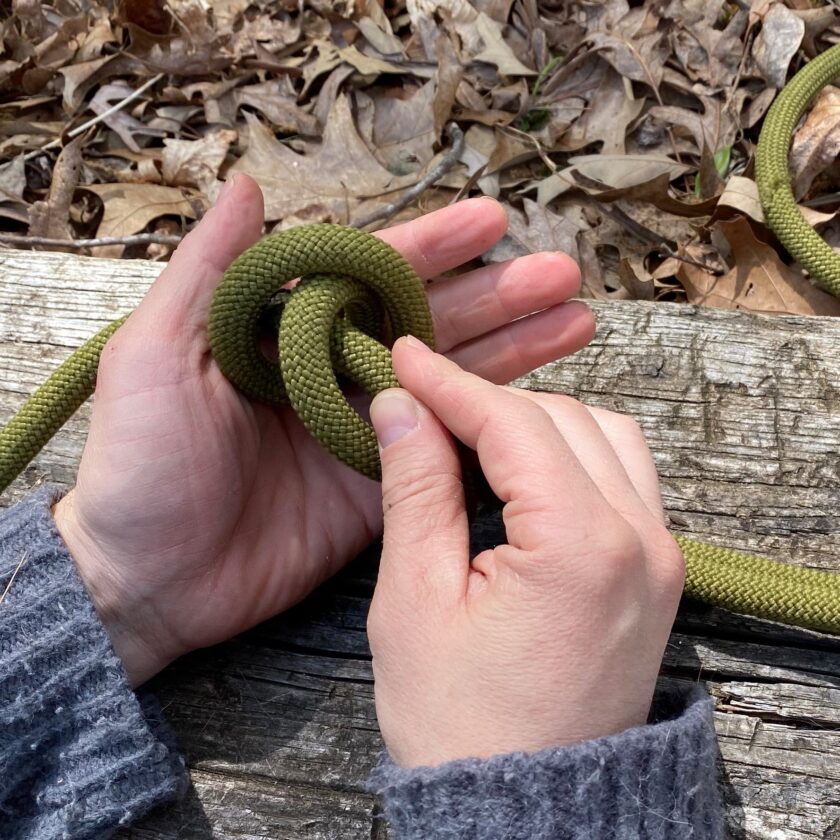
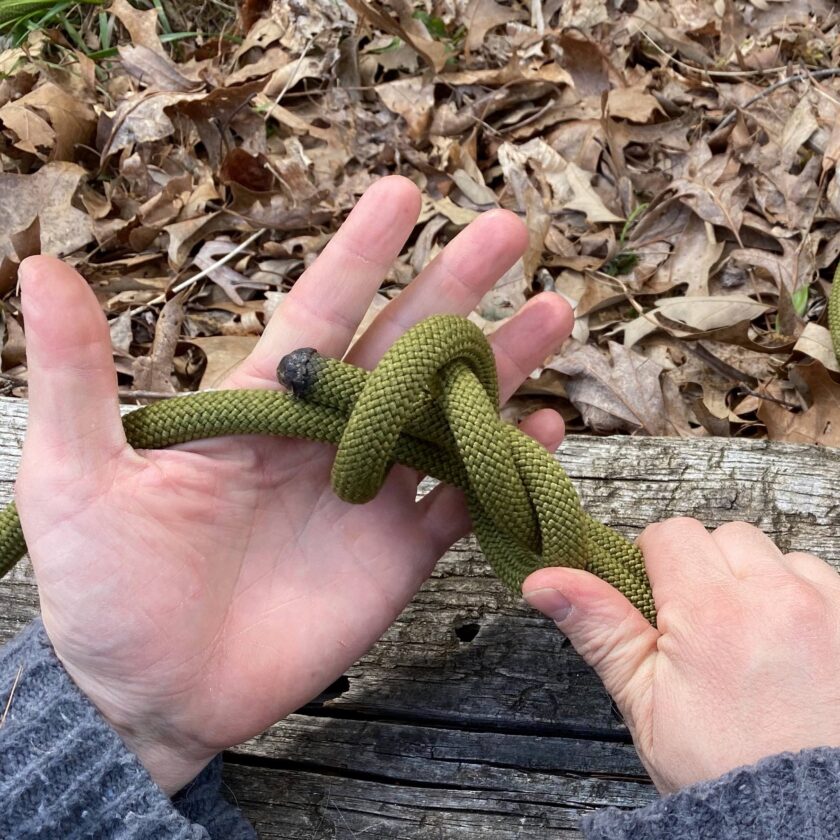
Double Fisherman’s Bend: Step 4
Clean up the knot. We have not tied half of the double fisherman’s bend.
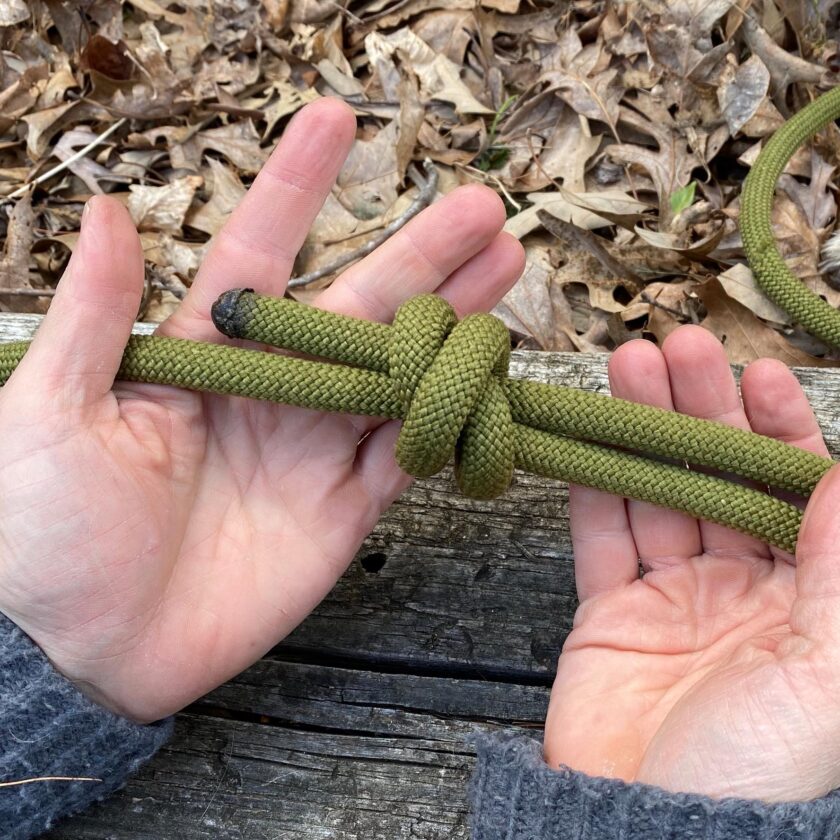
Double Fisherman’s Bend: Step 5
To tie the second half, we will tie the exact same knot with the other rope’s working end. You can tie the knot the opposite direction, however, there is an easier way to tie the second half with correct results. Either turn the rope around, or walk around to the other side of the rope.
You will find that this knot allows the rope to slid through. Pull yourself enough free line to make tying the knot easy.
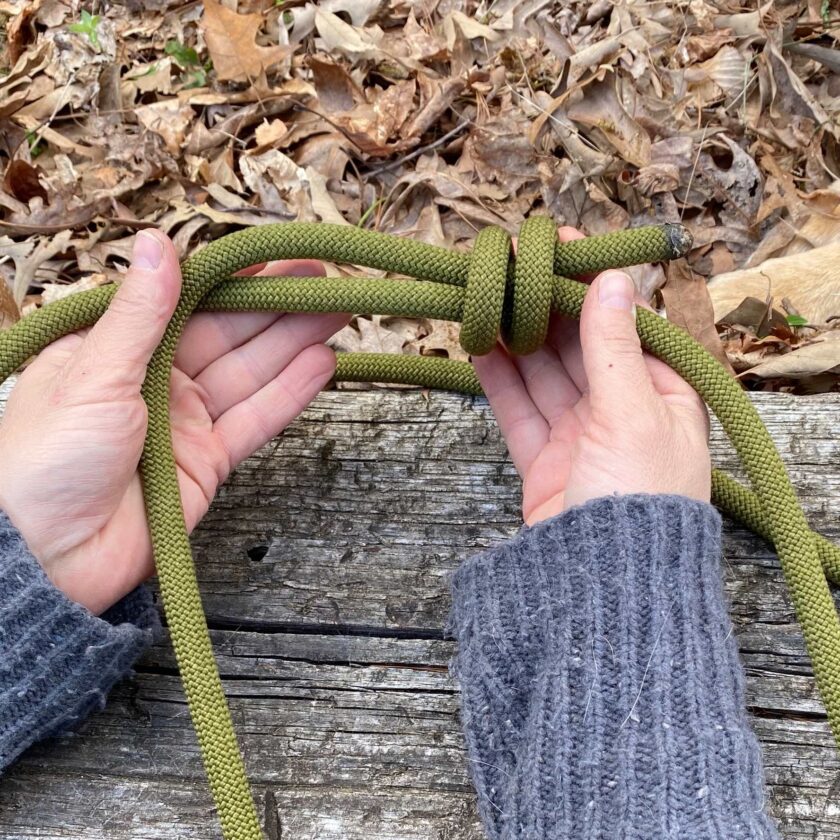
Double Fisherman’s Bend: Step 6
With one rope, wrap a loop around the other. Words will doubtlessly fail me in describing this knot, so when in doubt, follow the photos..
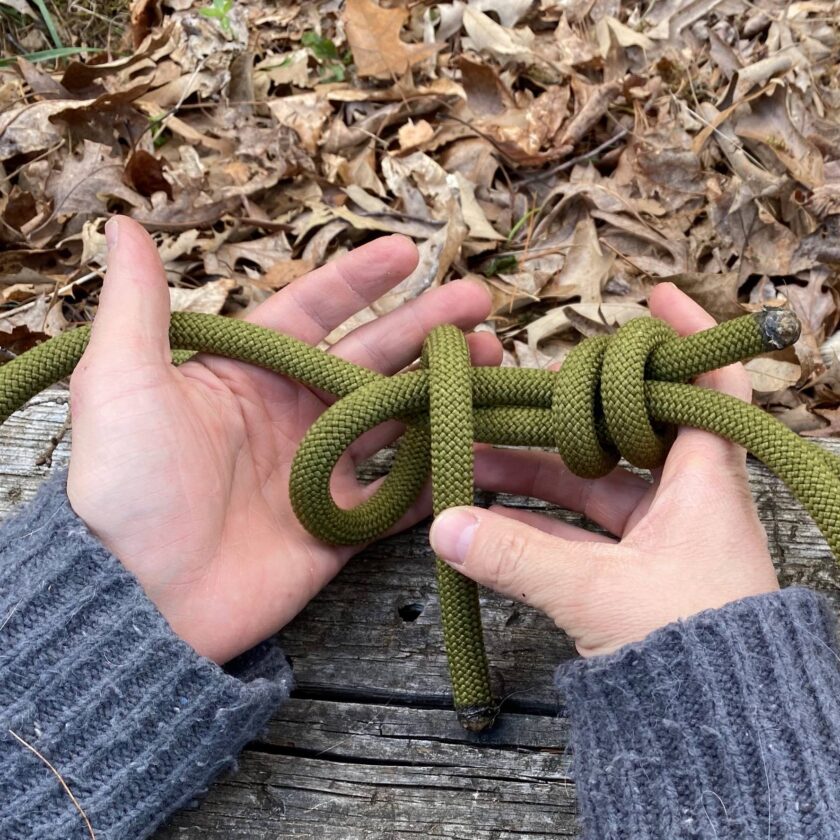
Double Fisherman’s Bend: Step 7
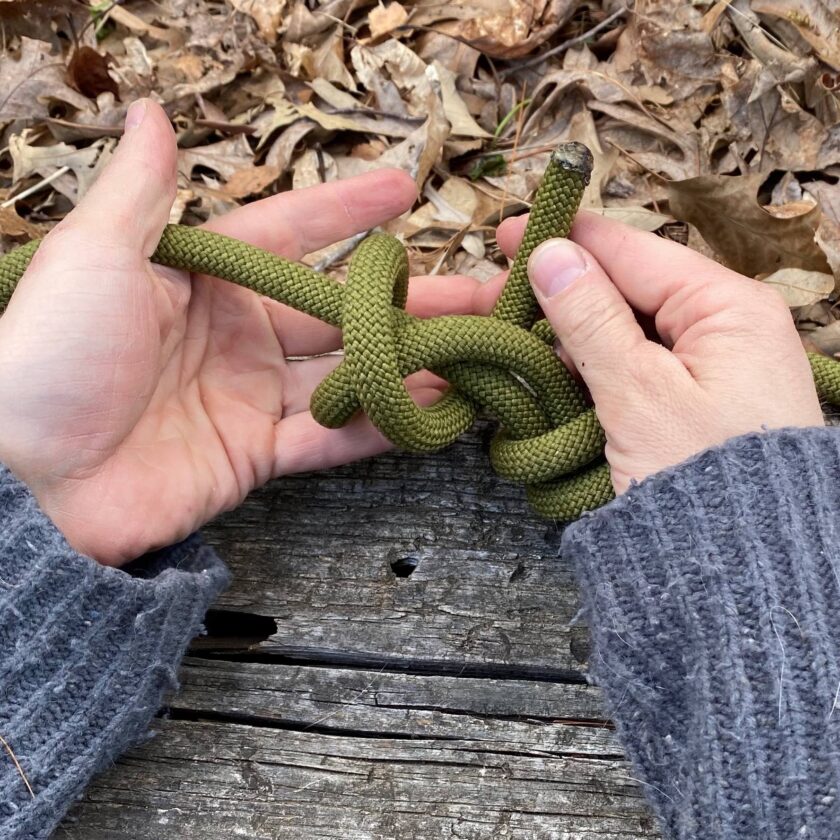
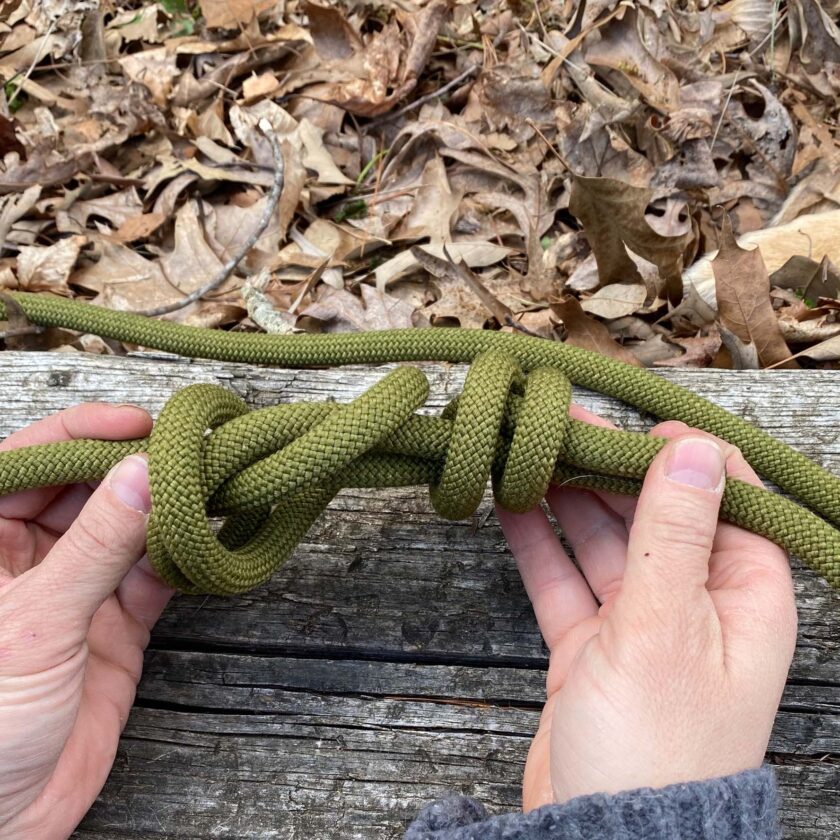
Double Fisherman’s Bend: Step 8
Clean the knot up. You will knot you’ve tied it correctly if you end up with “four bars and two ‘X’s”. The photos below illustrate this:
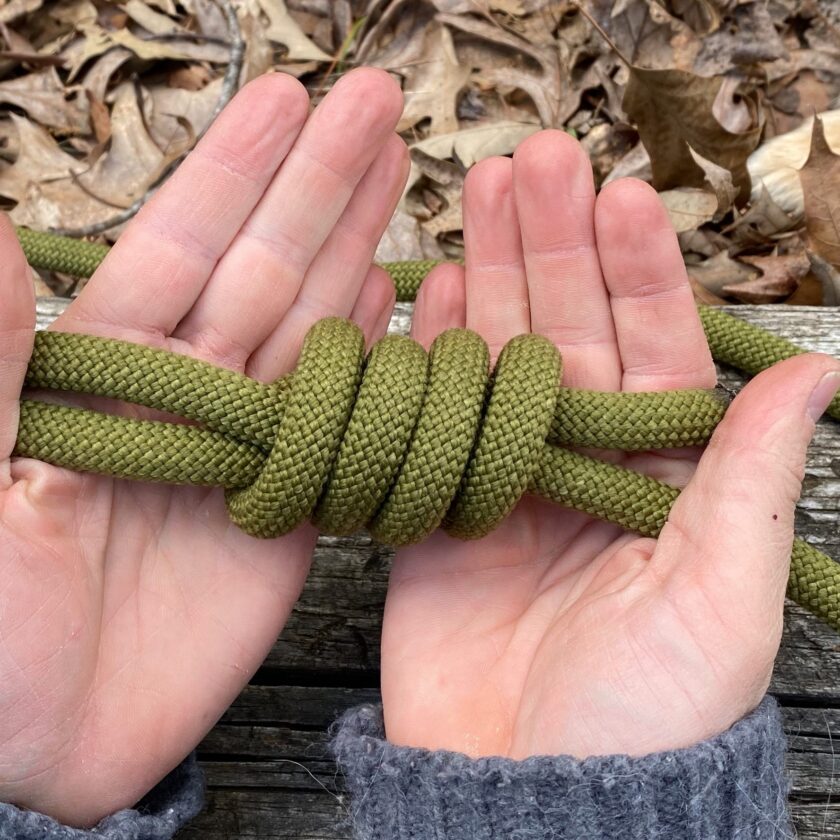
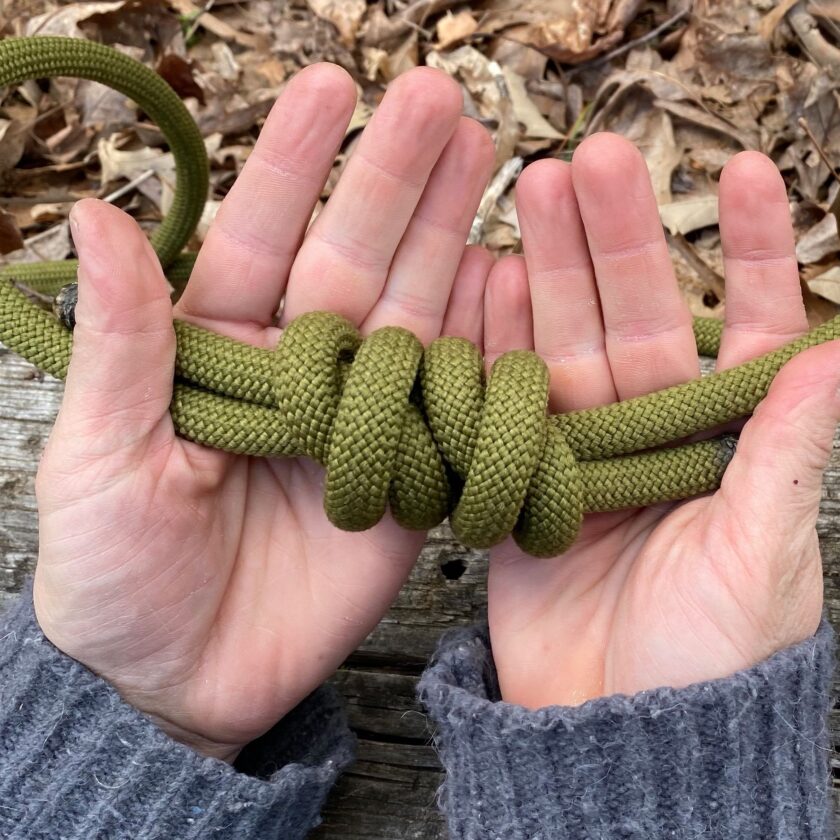
If you don’t end up with four bars and two Xs and instead have “two bars and an a X” on each side, you have tied on of the knots backwards. This is a relatively easy fix; untie one of the two and try again.
I’ve gotten great feedback from you guys on this little series. If you’ve written into tell me that you’ve learned a knot or taught a knot to someone using this, thank you! I really appreciate it. If you haven’t taken the time to learn a knot. . . why not?





